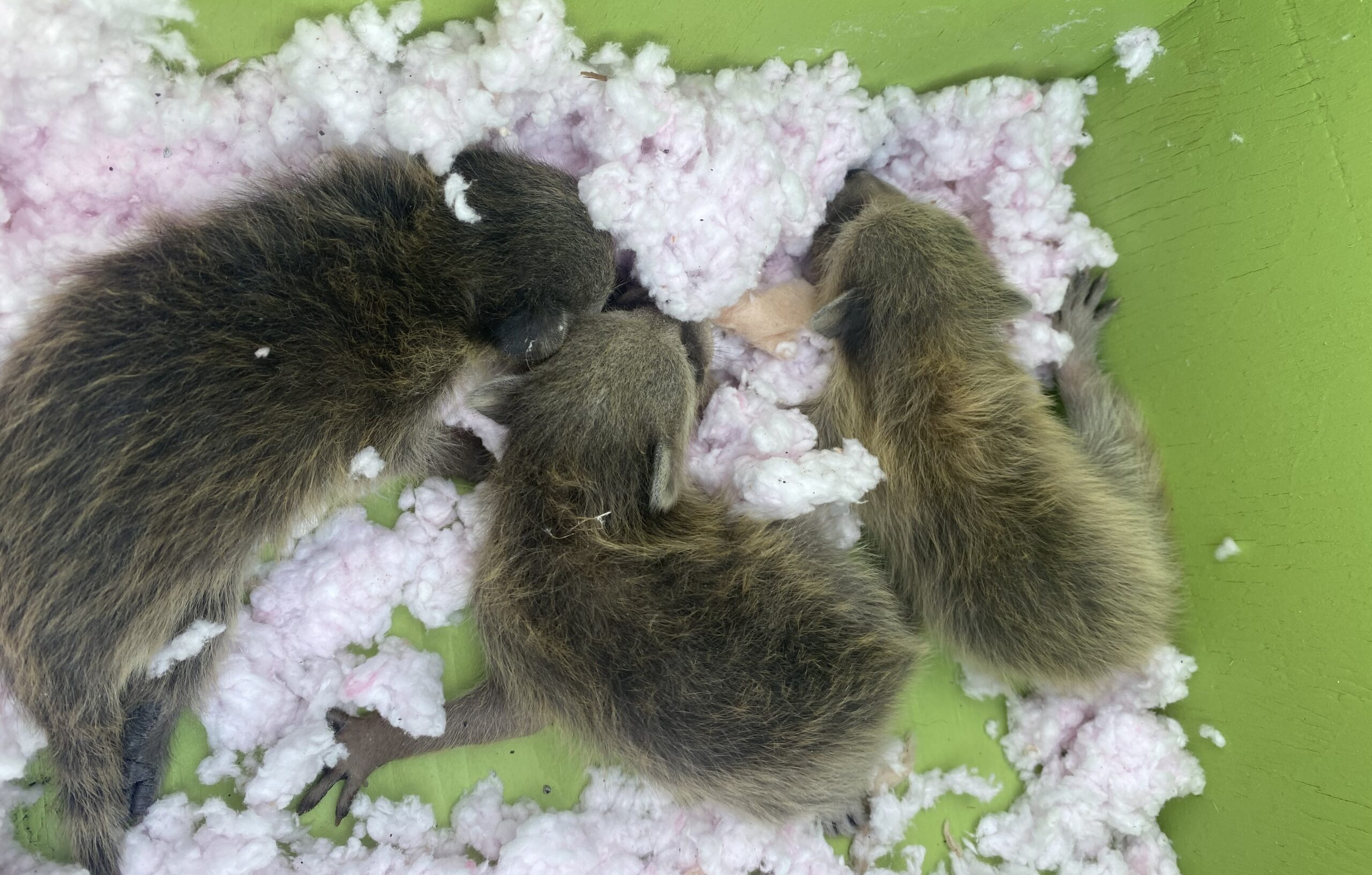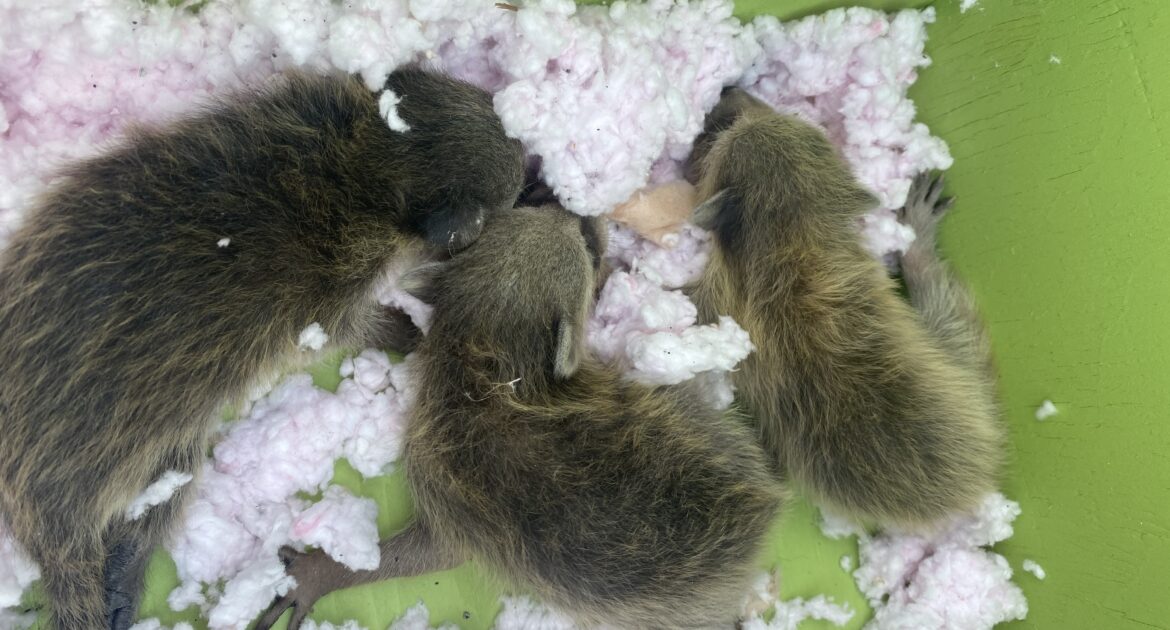Raccoons are clever, adaptable creatures that often take shelter in homes, especially in urban areas like York Region. So, where are raccoons most likely to nest in your home? Common spots include attics, chimneys, under porches, crawl spaces, and even garages—anywhere warm, safe, and hidden. They often sneak in through broken vents, loose siding, or gaps in roofs, creating nests to raise their young.
Identifying these nesting spots early is crucial to avoid damage like torn insulation, blocked vents, and unpleasant odors. If you catch the signs of activity quickly, you can prevent costly repairs. At Skedaddle Humane Wildlife Control, we specialize in safe, humane raccoon removal to protect your home.
Want to know more? Keep reading to learn how to spot nesting sites, recognize the warning signs, and take proactive steps to protect your property.
Attics
Attics are, without a doubt, the top choice for raccoons looking for a safe place to live. It’s easy to see why they love these spaces. High up and out of reach, attics provide the perfect combination of shelter, warmth, and quiet. Once they’ve gained entry, they can remain unnoticed for a while, causing damage as they settle in.
Raccoons are crafty when it comes to finding their way in. Damaged or loose vents in the attic are often their first target. Missing shingles, which can go unnoticed by homeowners, give them another path in. If your chimney doesn’t have a sturdy cap, they might climb inside and use it as an entryway to the attic.
If you suspect raccoons have made their way in, here are some key indicators to look out for:
- Scratching, bumping, or scampering sounds, especially at night or early morning.
- A musky, unpleasant smell coming from above.
- Torn insulation, shredded materials, or droppings scattered in the attic.
To keep your attic raccoon-free, it’s important to address any damage right away. Fix loose shingles, repair broken vents, and install a proper chimney cap to eliminate easy access points.
Chimneys
Chimneys might seem like an unlikely spot for a raccoon, but they offer everything an animal needs to feel safe. To a raccoon, a chimney resembles the hollow trees they naturally nest in. For homeowners, this can lead to some serious problems.
Chimneys are quiet, enclosed, and offer protection from predators. If the chimney cap is cracked or missing, it becomes a quick and easy spot for a raccoon to settle in.
A blocked chimney can prevent smoke from escaping when you light a fire, which is not only frustrating but also potentially dangerous. Additionally, nesting materials such as dried leaves pose a fire hazard. And if an animal falls into the fireplace, you’ll have another problem on your hands.
The good news is that these problems are preventable. Regularly checking your chimney for damage and installing a sturdy cap can protect it from unwelcome visitors.
Walls and Crawl Spaces
Raccoons don’t need much space to wiggle into your walls or crawl spaces. These areas are often overlooked, which makes them appealing. Once they find a way in, they’re quick to build a den and settle down.
Tiny gaps in your home’s siding or soffits are easy entry points for them. Damaged vents, which may seem like a minor issue at first, are also highly vulnerable.
What are some warning signs?
- Scratching noises from inside the walls or under the floors
- Torn insulation found around the edges of your crawl space
- A strong smell is concentrated in certain parts of the home
Crawl spaces and walls might seem challenging to secure, but blocking off exposed areas and inspecting for gaps on a regular basis can go a long way in preventing an infestation.
Garages and Sheds
While garages and sheds aren’t as closed off as other areas, they’re still common places for raccoons to set up camp. These spaces typically provide protection from predators and easy access to food sources like garbage bins or pet food.
Gaps or cracks under garage doors that haven’t been repaired can allow animals to sneak inside unnoticed. Broken vents or weak areas in the structure of a shed can also make it easy for animals to enter.
If you store items in your garage or shed, look for nests hidden inside boxes or between objects. You might notice scraps of leaves, paper, or household materials piled up in corners where animals have been nesting.
Keeping your garage and shed clean and organized reduces the chances of an animal making these areas their new home. Ensure doors and vents stay sealed, and check regularly for any signs of damage.
How to Handle the Problem Safely
Discovering that your property has become a nesting location is frustrating, but humane action is the best approach. Here’s how we recommend addressing the issue safely with urban wildlife control:
- One-Way Doors: These are an excellent way to ensure the animals leave without harm. One-way doors allow them to exit naturally but prevent them from coming back in.
- Sealing Entry Points: After the animals have left, closing off entry points is crucial. Repairing broken vents, sealing gaps, and reinforcing weak spots stops others from gaining access in the future.
- Safe Handling of Babies: If baby animals are involved, it’s important to ensure they’re safely moved and reunited with their mother outdoors before sealing the area.
- Thorough Cleaning: Raccoons leave behind messes that can attract other animals. Cleaning and sanitizing the nesting areas is critical to make your home less appealing to future visitors.
- Protective Measures: Chimney caps, vent covers, and barriers are simple yet effective tools to help keep animals out long-term.
By taking these steps, you’re not only addressing the immediate issue but also preventing a repeat problem.
Why You Should Act Quickly
Once raccoons find a nesting spot, they can cause surprising amounts of trouble in a short amount of time. Scratched walls, damaged insulation, blocked chimneys, and unpleasant smells are just a few examples. Acting quickly to prevent them from settling in long-term will save you from costly repairs later on. It also ensures your home remains clean and secure.
At Skedaddle Humane Wildlife Control in York Region, we’ve helped countless homeowners deal with these situations safely. Our experience in handling and preventing wildlife issues allows us to provide practical solutions that work for you. Whether it’s securing entry points, implementing humane methods, or cleaning affected spaces, we’ll make sure your space is protected with minimal disruption.
By knowing common raccoon nesting locations and acting at the first signs of activity, you can keep your home safe and secure without unnecessary worry. When you need professional help, trust us to handle the job ethically and effectively. Reach out today to learn more!




